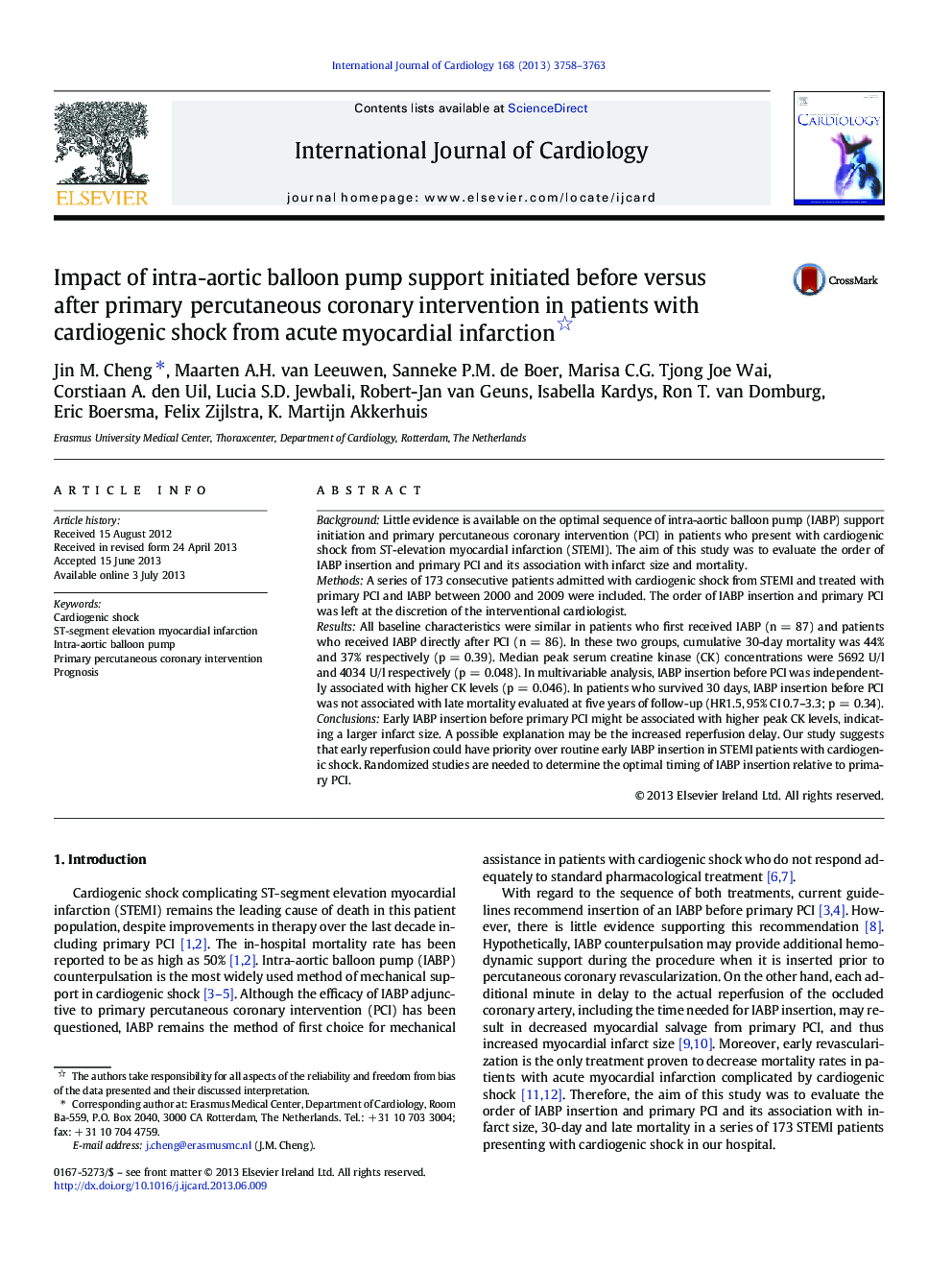| Article ID | Journal | Published Year | Pages | File Type |
|---|---|---|---|---|
| 5973890 | International Journal of Cardiology | 2013 | 6 Pages |
BackgroundLittle evidence is available on the optimal sequence of intra-aortic balloon pump (IABP) support initiation and primary percutaneous coronary intervention (PCI) in patients who present with cardiogenic shock from ST-elevation myocardial infarction (STEMI). The aim of this study was to evaluate the order of IABP insertion and primary PCI and its association with infarct size and mortality.MethodsA series of 173 consecutive patients admitted with cardiogenic shock from STEMI and treated with primary PCI and IABP between 2000 and 2009 were included. The order of IABP insertion and primary PCI was left at the discretion of the interventional cardiologist.ResultsAll baseline characteristics were similar in patients who first received IABP (n = 87) and patients who received IABP directly after PCI (n = 86). In these two groups, cumulative 30-day mortality was 44% and 37% respectively (p = 0.39). Median peak serum creatine kinase (CK) concentrations were 5692 U/l and 4034 U/l respectively (p = 0.048). In multivariable analysis, IABP insertion before PCI was independently associated with higher CK levels (p = 0.046). In patients who survived 30 days, IABP insertion before PCI was not associated with late mortality evaluated at five years of follow-up (HR1.5, 95% CI 0.7-3.3; p = 0.34).ConclusionsEarly IABP insertion before primary PCI might be associated with higher peak CK levels, indicating a larger infarct size. A possible explanation may be the increased reperfusion delay. Our study suggests that early reperfusion could have priority over routine early IABP insertion in STEMI patients with cardiogenic shock. Randomized studies are needed to determine the optimal timing of IABP insertion relative to primary PCI.
